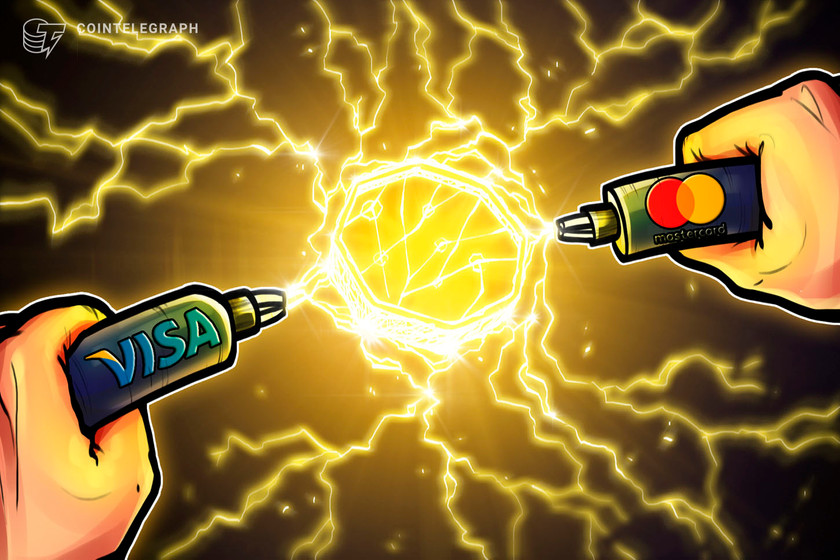How ambitious young blockchain projects are connecting blockchain and music

Blockchain technology is simple to understand at a basic level, existing as a shared database, where different devices distributed across the network must verify the entries posted. As a result, blockchain is most well-known for decentralization, anonymity and security, all of which are evident in the first cryptocurrency, Bitcoin (BTC). While many are quick to associate Bitcoin with blockchain, this is only one of the possible use cases for the technology.
One of the most notable use cases right now is the music industry, where creators have gained new opportunities to connect with their fans directly, further eliminating the need for an intermediary.
Today, the music industry is plagued with several overarching concerns, including the burden that record labels seem to place on the musicians that work with them. Traditionally, labels have determined how an artist will look and sound, also taking a huge cut from their profits. For perspective, three major record labels in the United States account for two-thirds of America’s music.
Sadly, this has resulted in creatives being the first to put in work but becoming the last to earn profits. These artists often receive little information into the royalty payments they will receive and are not given associated data about who is listening to their music.
These problems have only been amplified with streaming services such as Spotify, which, although seemed promising to the industry at large, have proven to favor the label once again. Then there are the emerging file-sharing platforms that were met with a regulatory roadblock and failed to realize the initial liberating purpose.
Fortunately, blockchain technology holds the potential to give us a golden age of music for artists and their fans.
Music through NFTs
Many of the blockchain-powered projects that are currently reshaping the industry are built based on the concept of bringing fans and musicians together. At their core, these platforms address the user experience for both audiences as they build larger and more highly engaged communities, where fans become marketers. In several of these models, fans are motivated to fulfill this role since they can gain profits as the artists’ audience grows.
These platforms also incorporate nonfungible tokens, or NFTs, as a method to record the ownership of items, providing artists with the option to release their music on the blockchain. This model ensures that artists can gain back full control of their work and resolve ownership issues by themselves. For example, these users can sell albums as an NFT, where the sale of stakes can provide collective ownership. By using this model, musicians take on a role as a business person and promote authentic art exactly the way they see it.
With an NFT, artists also gain access to new revenue streams. One example of this is musicians being able to automatically get a share of benefits when others use their work to release remixes. Alternatively, artists may also choose to receive micropayments for their streams while also taking advantage of NFT minting – opening the door to several additional possibilities.
More insights from Tune.FM here
Local talents will also benefit from new opportunities for international discovery, a possibility attributed to improved algorithms and the underlying inclusivity of music platforms based on the blockchain. Not to mention, crypto-powered payments will enable near-instant transactions when a fan plays their music.
In addition to NFTs, utility and other cryptocurrency tokens play a significant role in developing blockchain-based music platforms. Generally, platforms’ native tokens give both fans and artists a simple way to influence and reform the process of creating and sharing music.
An independent marketplace
Now, the only missing piece is a platform that will bring these conceptual ideas to life. Several ambitious young projects have already kicked this process off, among which is Tune.FM.
Tune.FM has risen with the mission to create a global independent music marketplace. Here, artists will have a place to collaborate, share their music and connect directly with their fans. Artists will gain access to a hybrid license that will enable them to stream, sell, publish and broadcast music while also accepting payment in fiat and cryptocurrency through the same platform.
As the underpinning of the marketplace, Tune.FM relies on the JAM token to enable micropayments directly between fans and artists, ensuring these ones earn more than they would have through the traditional stream and download model. The JAM token is further equipped as an incentive for streaming and curating music. As an incentive, JAM will create a win-win system where all participants are fairly compensated for their efforts and can continue to benefit from the entire ecosystem of Tune.FM.
Through the provision of utility tokens, NFTs and blockchain, Tune.FM is positioned to democratize the music industry, starting with APE by ApeCoin. ApeCoin is an ERC-20 governance and utility token used within the APE ecosystem to empower and incentivize decentralized community building at the forefront of Web 3.0. It is additions like this that will take on major labels, large publishing companies and streaming services acting as gatekeepers for distribution.
Disclaimer. Cointelegraph does not endorse any content or product on this page. While we aim at providing you with all important information that we could obtain, readers should do their own research before taking any actions related to the company and carry full responsibility for their decisions, nor can this article be considered as investment advice.









